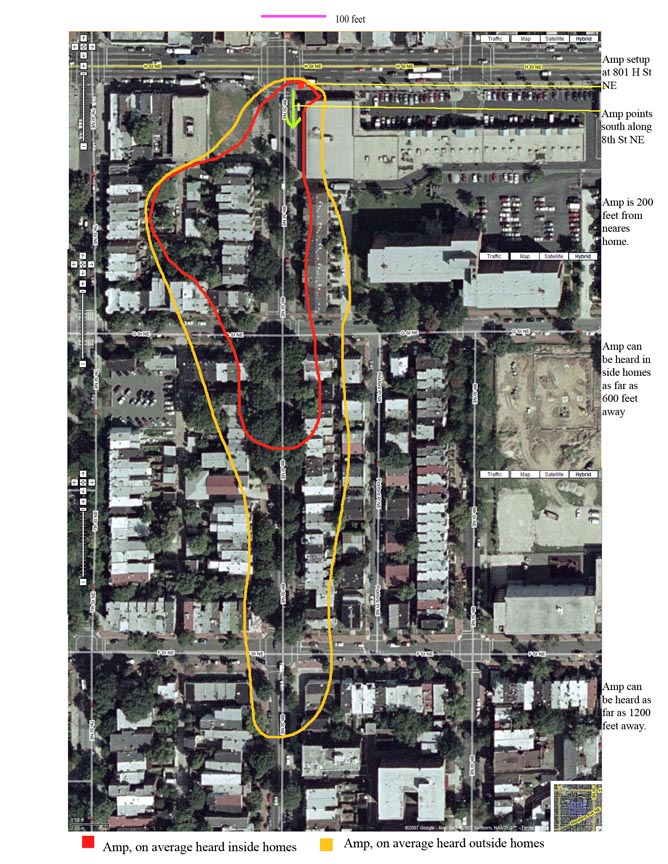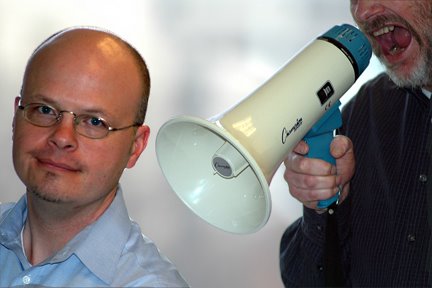D.C. Law Allows Noise to Cast Wide Net
 (CLICK ON MAP TO ENLARGE)
(CLICK ON MAP TO ENLARGE)To illustrate the geographic impact of noise on one northeast D.C. neighborhood, I surveyed several neighbors to see how far up the street one could hear--both in and outside the home--several group’s amplifiers. I also used average decibel meter readings from a September 2007 Washington Post story on the topic.
Much of the noise impact felt by each resident is dependent on the amplifier volume, wind and the quality of a person’s windows, but I think the following map provides a good perspective.
I used the average decibel reading (81.7) measured at 20 feet from the source based on the Washington Post findings. When the distance is doubled from a noise point source, the sound level decreases six decibels, according to the Minnesota Pollution Control Agency.
Using this formula, the maximum level emanating north on 8th St NE, by one noisy group is:
* Source = 110 decibels (dB) [rock concert]
* 20 feet = 98 dB
* 40 feet = 92 dB [lawn mower]
* 80 feet = 86 dB
* 160 feet = 80 dB [alarm clock]
* 320 feet = 74 dB
* 640 feet = 68 dB
* 1280 feet = 62 dB
To put this in perspective, office noise typically measures 50 dB; normal conversation is about 60 dB.
D.C.’s broken noise law currently allows no limits on amplified free speech between 7 a.m. and 9 p.m. anywhere in the city. This means residents have no right to quiet enjoyment outside or inside their homes.


0 Comments:
Post a Comment
<< Home